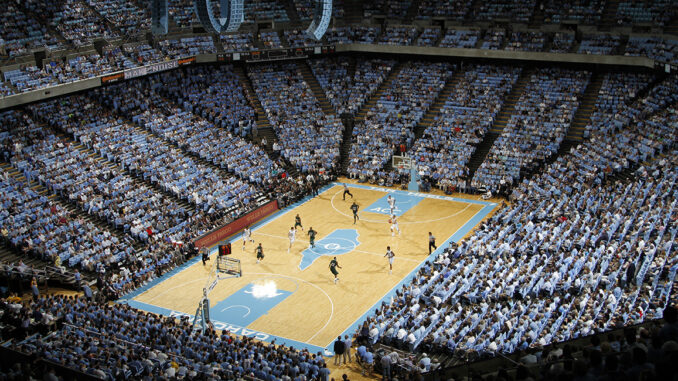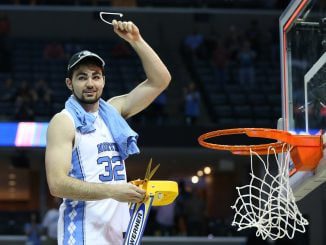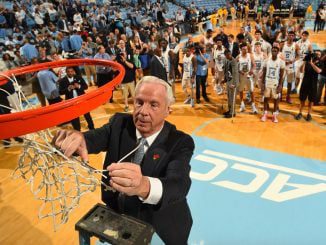
NBA star Draymond Green, who played collegiately at Michigan State, recently opined that the NBA is “boring,” calling it a “copycat league.” Jones Angell, radio voice of the UNC Tar Heels, said on a recent podcast that college baseball is growing in popularity because it seems more “college-y” these days than basketball or football. Many college sports fans agree.
So why, then, are college sports administrators trying to mimic pro sports by taking the “college” out of it?
UNC Chancellor Lee Roberts has endorsed replacing the Dean Smith Center, home to Carolina men’s basketball since 1986, with an off-campus arena “that would be part of a broader mixed-use development program … including lodging, retail, entertainment and dining.”
Great. Instead of feeling like they are going to a Carolina basketball game on the UNC campus they love, UNC fans will feel like they are in the center of a large city going to an NBA arena to watch professional basketball. Roberts dismisses the fact that the new arena would not be within walking distance from campus for students, faculty and staff. Much more important, he says, is that there’s nowhere near the Dean Dome to “get a bite to eat before the game” or “grab a beer after the game.” I dare say that most patrons of the Dean Dome find a way to get fed at the game or in route to it, and beer is now served there.
The real reason the UNC administration wants to build a new arena is money. NIL (name, image and likeness — a fancy term for paying the players) and unlimited transfer rules have turned college basketball and football into a mad financial scramble. Players are demanding and getting thousands — in some cases, millions — of dollars to play. Though building the new arena would take hundreds of millions of dollars, administrators are convinced they can make more money because of premium seating — luxury suites, boxes and terraces. They say the Dean Dome cannot be remodeled to create such money-making amenities.
This type of elitist arena came into vogue in the 1990s. Much of the lower bowl is devoted to space-eating luxury seating, leaving few good seats for rank-and-file patrons. Then an upper deck is stacked on top of the suites with no overhang. The result is that none of the upper deck seats are any good, unlike in the Dean Dome.
The Smith Center seats 21,750, and last season Carolina led the nation in average attendance, attracting 20,593 per game. The new arena will seat only 16,000, disfranchising about 5,000 fans. Many of those could be UNC faculty and staff.
The capacity of Carmichael Auditorium, the Smith Center’s predecessor, was only 10,000. When construction of a new arena was under discussion in the 1980s, coach Dean Smith said he wanted an arena big enough that all interested students, faculty and staff could attend basketball games.
Roy Williams, who went 241-40 as head coach in the Dean Dome, said recently, “I’m all for keeping the arena on campus … I think that was coach Dean Smith’s vision.” Williams cited the enormous cost of the new arena and his belief that problems with the Smith Center, such as outdated concourses and restrooms, could be addressed without replacing it. Current head coach Hubert Davis has hinted that he prefers staying on campus.
In 1999, NC State moved out of its on-campus arena, where its basketball program had thrived for decades, into a pro-style arena that it shares with the Carolina Hurricanes hockey team. NCSU lost much of its homecourt advantage, and its men’s program has struggled since. The women’s team, left behind in historic Reynolds Coliseum, has flourished. Roberts, who has been an effective leader during his brief tenure at UNC, is a Duke grad. He should ask his friends at Duke how they would feel about leaving the ancient-yet-iconic Cameron Indoor Stadium for a shiny new downtown arena with luxury boxes.
UNC is betting that it can cater to the uber-wealthy and corporate executives, and rank-and-file fans will stay on board.
Maybe. But those fans might say this doesn’t feel like Carolina Basketball anymore and find something else to do.
John Stuart Bruce is a UNC alumnus and lives in Raleigh.



